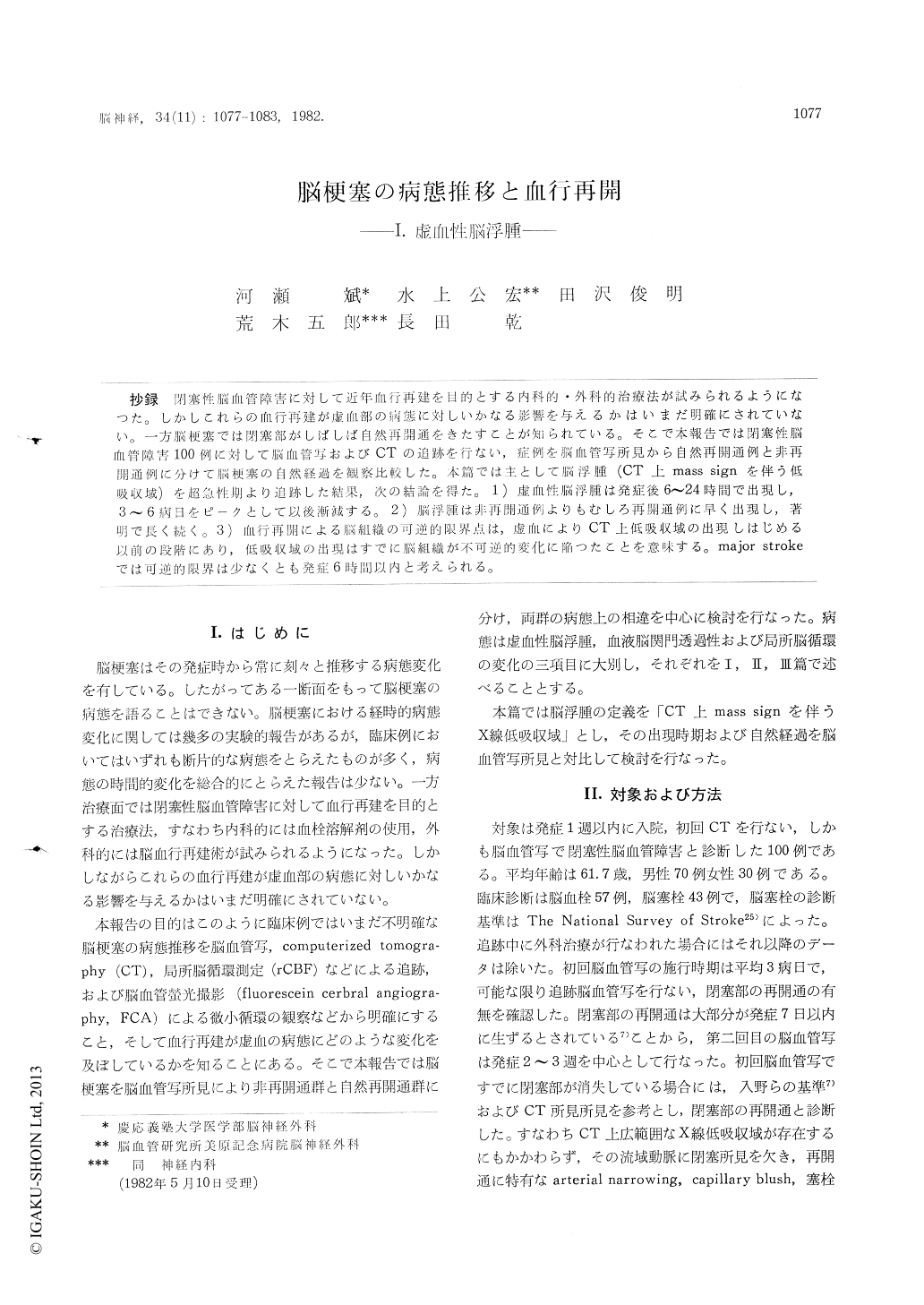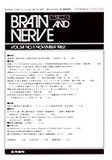Japanese
English
- 有料閲覧
- Abstract 文献概要
- 1ページ目 Look Inside
抄録 閉塞性脳血管障害に対して近年血行再建を目的とする内科的・外科的治療法が試みられるようになつた。しかしこれらの血行再建が虚血部の病態に対しいかなる影響を与えるかはいまだ明確にされていない。一方脳梗塞では閉塞部がしばしば自然再開通をきたすことが知られている。そこで本報告では閉塞性脳血管障害100例に対して脳血管写およびCTの追跡を行ない,症例を脳血管写所見から自然再開通例と非再開通例に分けて脳梗塞の自然経過を観察比較した。本篇では主として脳浮腫(CT上mass signを伴う低吸収域)を超急性期より追跡した結果,次の結論を得た。1)虚血性脳浮腫は発症後6〜24時間で出現し,3〜6病日をピークとして以後漸減する。2)脳浮腫は非再開通例よりもむしろ再開通例に早く出現し,著明で長く続く。3)血行再開による脳組織の可逆的限界点は,虚血によりCT上低吸収域の出現しはじめる以前の段階にあり,低吸収域の出現はすでに脳組織が不可逆的変化に陥つたことを意味する。major strokeでは可逆的限界は少なくとも発症6時間以内と考えられる。
A natural history of ischemic cerebral edema was analyzed in 100 patients with occlusive cere-brovascular diseases admitted within one week of onset, with serial computed tomography (CT) and angiograms. Cerebral edema was defined as a low-density area with mass sign on CT. A total of 446 studies of CT were performed. In 40 patients with major completed stroke admitted 24 hours of onset, a total of 73 studies of CT were taken with-in 48 hours of onset, and a timing of appearance of cerebral edema was analized. Patients were allocated to two groups according to the findings on angiograms; 68 patients who showed occlusive lesions on sequential angiograms (the group of no-recanalization), and 32 patients who showed re-opening of occluded vessels on the first or sequen-tial angiograms (the group of no-recanalization).
In the group of no-recanalization a low-density area gradually appeared between 6 and 24 hours of onset A. mass sign reached its peak on the 3rd day with a peak incidence of 56%, and midline shift was present in 30% of the cases. It was re-solved within 2 weeks in most cases. In the group of recanalization, a low density area appeared after 4 hours and rapidly increase after 6 hours.All patients had a low-density area at 12 hours of onset. A mass sign progressed until the 6th day with a peak incidence of 82%, and midline shift was present in 50% of the cases. The duration of mass sign was longer than that in the group of no-recanalization.
These results suggest that the permissible dura-tion of ischemia is considered to be within 6 ho-urs of onset in profound ischemia. After 6 hours, ischemic tissue damage may not be reversible by the revascularization, even if CT shows no chan-ge during ischemia. An abrupt revascularization may not contribute to the recovery of brain da-mage, but accelerate the ischemic cerebral edema.

Copyright © 1982, Igaku-Shoin Ltd. All rights reserved.


